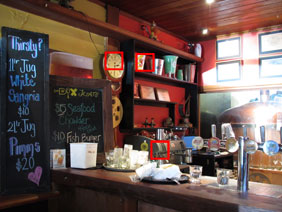Canon IXUS 1000 HS / PowerShot SD4500 IS
-
-
Written by Gordon Laing
Quality
Canon IXUS 1000 HS / PowerShot SD4500 IS vs PowerShot S95 Real-life resolution (default settings)
Canon IXUS 1000 HS / PowerShot SD4500 IS results : Real-life resolution / High ISO Noise / Handheld Night Scene
Canon IXUS 1000 HS / PowerShot SD4500 IS results : Real-life resolution / High ISO Noise / Handheld Night Scene
|
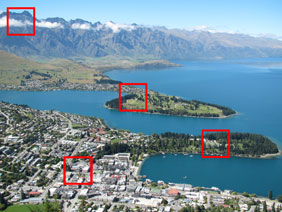 |
To compare real-life performance we shot the same scene with the Canon IXUS 1000 HS / PowerShot SD4500 IS and PowerShot S95 within a few moments of each other using their best quality JPEG settings and lowest sensitivities.
The lenses were adjusted to deliver as close a field-of-view as possible. Each camera was set to Program mode without intervention to see how they performed with default settings.The image above was taken with the Canon IXUS 1000 HS / PowerShot SD4500 IS at 125 ISO with an exposure of 1/1000 and the lens set to 6mm f3.4; the original file measured 2.91MB. As stated above, we allowed each camera to automatically select its own exposure in Program mode, in order to compare how they performed under default settings. Coincidentally both selected similar apertures.
The IXUS 1000 HSÂ / SD4500 IS and PowerShot S95 may share a 10 Megapixel resolution, but their sensors are quite different: the former employs a 1/ 2.3in back-illuminated CMOS sensor, while the latter uses a 1/ 1.7in CCD sensor. The larger sensor in S95 should give it an advantage in light gathering power, although the difference in CMOS and CCD technology also plays a part.
Looking at the crops below from a scene under bright conditions at their lowest sensitivities, the most obvious difference between the cameras is processing style, with the enthusiast-targeted S95 interestingly applying a little more sharpening and contrast for a slightly punchier result. Alongside, the IXUS 1000 HS / SD4500 IS crops look a little soft, but this could easily be boosted if desired.
In terms of real-life detail, there’s unsurprisingly not much in it. The PowerShot S95 appears to enjoy a minor edge, but that’s more due to the inability to perfectly match their coverage, with the S95 being zoomed-in fractionally closer than the IXUS 1000 HS / SD4500 IS.
Either way, a good start for the IXUS 1000 HS / SD4500 IS which under bright conditions at its lowest sensitivity can deliver similar results to the enthusiast’s PowerShot S95. But will the S95’s bigger sensor give it an advantage in low light, and how does the leader of the super-zooms, the Panasonic Lumix TZ20 / ZS10 compare? Find out in our our IXUS 1000 HS / SD4500 IS High ISO Noise results, or if you’ve seen enough, head straight to our Verdict. PS – scroll down to compare the camera’s sharpness when fully zoomed-in and out.
Canon IXUS 1000 HS / PowerShot SD4500 IS | Canon PowerShot S95 | |
 |  | |
f3.4, 125 ISO | f4, 80 ISO | |
 |  | |
f3.4, 125 ISO | f4, 80 ISO | |
 | 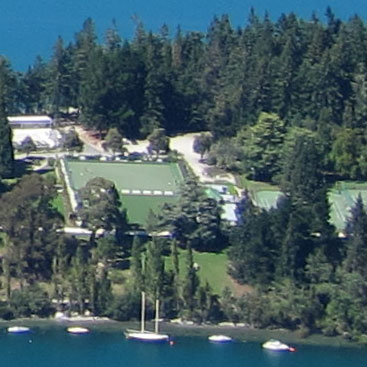 | |
f3.4, 125 ISO | f4, 80 ISO | |
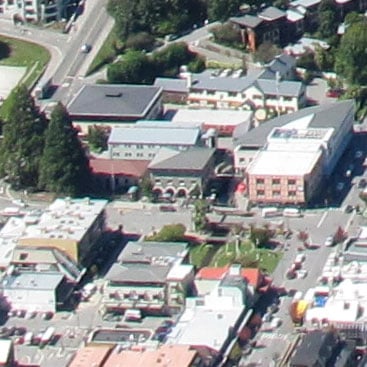 | 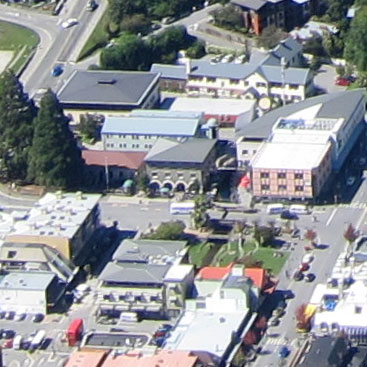 | |
f3.4, 125 ISO | f4, 80 ISO |
Canon IXUS 1000 HS / PowerShot SD4500 IS Sharpness when zoomed-out and zoomed-in
Like most super-zoom cameras, the IXUS 1000 HS / SD4500 IS loses contrast at its longest focal length, but this is easily boosted in software later if desired to deliver 100% crops which look similar to those at the shortest focal lengths. More importantly, there’s very few optical artefacts to worry about in the corners of the image at either ends of the range, beyond minor fringing at wide-angle. Overall a good optical performance from the lens on the IXUS 1000 HS / SD4500 IS. Now let’s see how it compares across its sensitivity range in our High ISO Noise results.
Canon IXUS 1000 HS / PowerShot SD4500 IS Wide angle sharpness at 36mm equivalent | Canon IXUS 1000 HS / PowerShot SD4500 IS Telephoto sharpness at 360mm equivalent | |
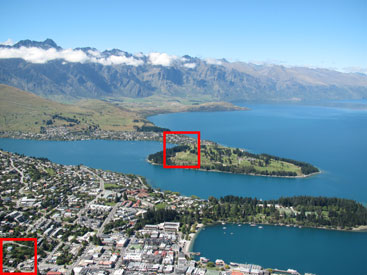 | 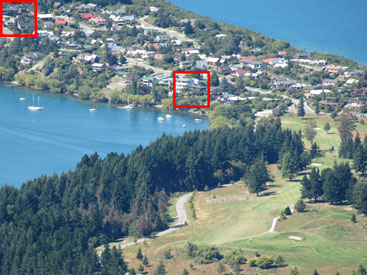 | |
f3.4, 125 ISO | f5.6, 125 ISO | |
 | 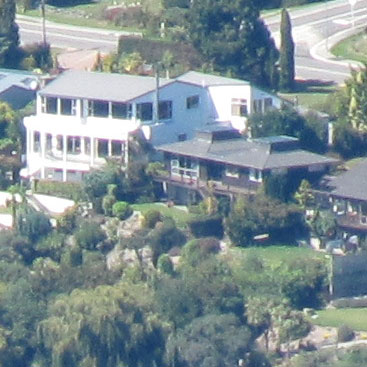 | |
f3.4, 125 ISO | f5.6, 125 ISO | |
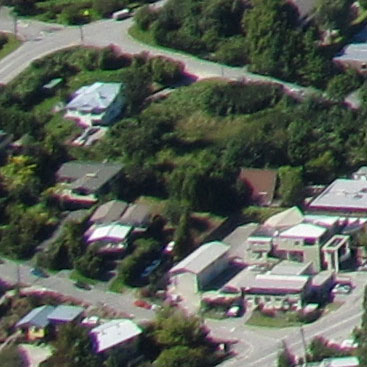 | 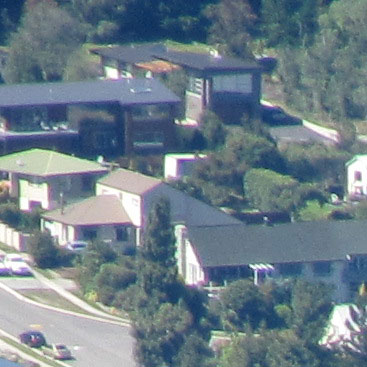 | |
f3.4, 125 ISO | f5.6, 125 ISO |
Canon IXUS 1000 HS / PowerShot SD4500 IS vs Panasonic Lumix TZ20 / ZS10 High ISO Noise
Canon IXUS 1000 HS / PowerShot SD4500 IS results : Real-life resolution / High ISO Noise / Handheld Night Scene
Canon IXUS 1000 HS / PowerShot SD4500 IS results : Real-life resolution / High ISO Noise / Handheld Night Scene
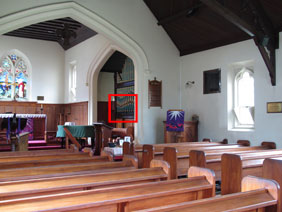 |
|
To compare noise levels under real-life conditions we shot this scene with the Canon IXUS 1000 HS / PowerShot SD4500 IS and Panasonic Lumix DMC-TZ20 / ZS10 within a few moments of each other using their best-quality JPEG settings and at each of their ISO settings.
The lenses were adjusted to deliver as close a field-of-view as possible. Each camera was set to Program to see how they performed with default settings; Contrast enhancers were disabled as they can introduce noise. Note: a PowerShot S95 comparison is lower on the page. The image above was taken with the Canon IXUS 1000 HS / PowerShot SD4500 IS at 125 ISO with an exposure of 1/2 a second and the lens set to 7mm f3.5; the original file measured 2.13MB. As stated above, we allowed each camera to automatically select its own exposure in Program mode, in order to compare how they performed under default settings.
The IXUS 1000 HS / SD4500 IS and Lumix TZ20 / ZS10 share (C)MOS sensor technology and essentially the same sensor size, but quite different resolutions. The Canon employs a relatively modest 10 Megapixel resolution compared to 14.1 Megapixels on the Panasonic. The larger pixel-pitch of the Canon should give it an advantage in light gathering power, but the higher resolution of the Panasonic may give it an advantage in resolving power – at least at lower ISOs.
The sequence below starts at 125 ISO for the Canon and 100 ISO for the Panasonic, and while the higher resolution of the latter is delivering a slightly tighter crop, the former is visibly cleaner. Neither may be described as being artefact-free, but the Lumix TZ20 / ZS10 image definitely exhibits more noticeable processing and noise artefacts at this point.
At 200 ISO, noise and processing levels have increased on the Canon, although it’s still looking crisper than the Panasonic. The Lumix TZ20 / ZS10 is still showing a degree of patchiness, although on the upside it’s arguably no worse than at 100 ISO.
With the sensitivity increased to 400 ISO, both cameras suffer from a drop in image quality with a softness and loss of saturation compared to lower sensitivities. Noise levels are visibly higher on both, but the Lumix TZ20 / ZS10 suffers from more artefacts than the IXUS 1000 HS / SD4500 IS.
At 800 ISO, the story continues with more noise from both cameras, but again the Canon enjoying a crisper, more detailed result. The Panasonic has become quite patchy at this point. Likewise at 1600 ISO where there’s a loss of saturation and detail from both cameras, but again better noise control from the Canon.
That’s the top of the ISO range at the full resolution from the Lumix TZ20 / ZS10, with higher sensitivities offered automatically at a reduced resolution in the High Sensitivity preset. Our example below was captured at 3200 ISO and 3 Megapixels. The Canon IXUS 1000 HS / SD4500 IS does however bravely offer a 3200 ISO option at its full resolution, and while it ain’t pretty, it’s much preferred to the Lumix TZ20 / ZS10’s 3200 ISO output at 3 Megapixels.
This comparison confirms what we suspected: the lower resolution of the IXUS 1000 HS / SD4500 IS allows it to gather more light per pixel and enjoy a higher signal to noise ratio. This coupled with superior processing delivers better-looking results at every sensitivity when compared at 100%. Of course this isn’t completely fair, as when images from both cameras are reproduced at the same physical size, the artefacts from the Lumix TZ20 / ZS10 become less apparent than below. This evens things up at the lower sensitivities, but at 800 ISO and above, the Panasonic produces worse-looking output even at the same reproduction size.
The desire to equip compact cameras with ever-increasing resolutions may be driven by market demands, but it can come at the cost of image quality at higher sensitivities. It’s not surprising to find Panasonic steadily increase the resolution of its super-zoom to remain numerically competitive, but we can’t help but wonder what it would have looked like with a lower resolution sensor employing the latest technology.
In the meantime, the IXUS 1000 HS / SD4500 IS may be out-featured by the Lumix TZ20 / ZS10, but enjoys an advantage in low light performance. Scroll down to see an additional comparison against the Canon PowerShot S95, who’s slightly larger sensor allows it to enjoy a slightly cleaner result at 400 ISO and up. Below this we have another set of results for the IXUS 1000 HS / SD4500 IS which you may find useful.
This isn’t the end of the story though as both the IXUS 1000 HS / SD4500 IS and Lumix TZ20 / ZS10 boast additional modes which capture a burst of images and combine them into one to reduce shake or visible noise. It’s something we’ve seen before from Sony with impressive results, but it’s the first time Canon or Panasonic has offered it. See how it performs on the Canon in our IXUS 1000 HS / SD4500 IS Handheld Night Scene results page, or if you’ve seen enough, skip-ahead to our sample images or verdict.
Canon IXUS 1000 HS / PowerShot SD4500 IS | Panasonic Lumix DMC-TZ20 / ZS10 | |
 |  | |
125 ISO | 100 ISO | |
 |  | |
200 ISO | 200 ISO | |
 |  | |
400 ISO | 400 ISO | |
 |  | |
800 ISO | 800 ISO | |
 | 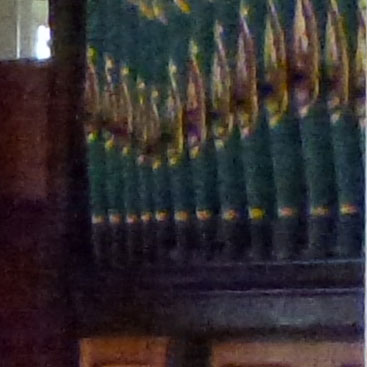 | |
1600 ISO | 1600 ISO | |
 |  | |
3200 ISO | High Sensitivity Preset (here at 3200 ISO and 3 Mpixels) | |
 | ||
Low Light preset (here at 1600 ISO) | Higher sensitivities not available |
Canon IXUS 1000 HS / PowerShot SD4500 IS vs Canon PowerShot S95 High ISO Noise
Canon IXUS 1000 HS / PowerShot SD4500 IS | Canon PowerShot S95 | |
 | ||
80 ISO not available | 80 ISO | |
 |  | |
125 ISO | 100 ISO | |
 |  | |
200 ISO | 200 ISO | |
 |  | |
400 ISO | 400 ISO | |
 |  | |
800 ISO | 800 ISO | |
 |  | |
1600 ISO | 1600 ISO | |
 |  | |
3200 ISO | 3200 ISO | |
 |  | |
Low Light preset (here at 1600 ISO) | Low Light preset (here at 2500 ISO) |
Canon IXUS 1000 HS / PowerShot SD4500 IS High ISO Noise (different days and crops)
Canon IXUS 1000 HS / PowerShot SD4500 IS | Canon IXUS 1000 HS / PowerShot SD4500 IS | |
 |  | |
125 ISO | 125 ISO | |
 |  | |
200 ISO | 200 ISO | |
 |  | |
400 ISO | 400 ISO | |
 |  | |
800 ISO | 800 ISO | |
 |  | |
1600 ISO | 1600 ISO | |
 |  | |
3200 ISO | 3200 ISO | |
 |  | |
Low Light preset (here at 1600 ISO) | Low Light preset (here at 1600 ISO) |
Canon IXUS 1000 HS / PowerShot SD4500 IS: Handheld Night Scene versus Program (at 1250 / 800 ISO)
Canon IXUS 1000 HS / PowerShot SD4500 IS results : Real-life resolution / High ISO Noise / Handheld Night Scene
Canon IXUS 1000 HS / PowerShot SD4500 IS results : Real-life resolution / High ISO Noise / Handheld Night Scene
|
The IXUS 1000 HS / SD4500 IS becomes the first Canon camera to feature a mode which stacks multiple images taken in a burst into a single image to reduce noise or shake.
On this page we’ve put the IXUS 1000 HS / SD4500 IS’s Handheld Night Scene mode to the test. This automatically selects the sensitivity so we’ve compared it against the closest manual ISO setting in traditional modes.
Our first example was taken in a dim bar where Handheld Night Scene automatically selected a sensitivity of 1250 ISO. Unfortunately the IXUS 1000 HS / SD4500 IS doesn’t offer manual ISO increments 1/3EV apart, so we had to choose either 800 or 1600 ISO for comparison. In this first example, we’ve given the standard mode a slight advantage by selecting 800 ISO.
Looking at the crops below, the shot taken in Program at 800 ISO contains much more visible noise than the one taken in Handheld Night Scene at 1250 ISO. As we’ve seen before, the presence of noise can give the impression of a sharper image, and this coupled with an absence of noise on the Handheld Night Scene version certainly make the latter look soft in comparison.
But look closely and you’ll see there’s little if any difference in terms of real-life detail captured. This means the Handheld Night Scene mode has managed to retain a similar degree of detail, but with considerably lower noise levels – and this is even more impressive given it was actually operating at a sensitivity 2/3EV higher.
A good start for the new mode, but scroll down for two more examples.
Canon IXUS 1000 HS / SD4500 IS: Handheld Night Scene at 1250 ISO | ||||
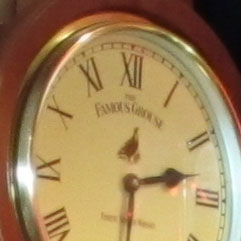 |  | 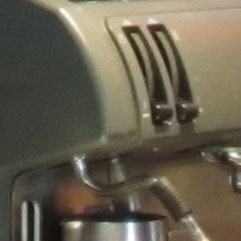 | ||
f3.4, 1/15, 1250 ISO | f3.4, 1/15, 1250 ISO | f3.4, 1/15, 1250 ISO | ||
Canon IXUS 1000 HS / SD4500 IS: Program at 800 ISO | ||||
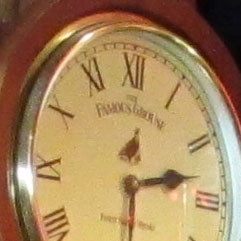 |  | 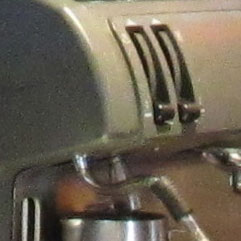 | ||
f3.4, 1/10, 800 ISO | f3.4, 1/10, 800 ISO | f3.4, 1/10, 800 ISO | ||
Canon IXUS 1000 HS / SD4500 IS: Handheld Night Scene versus Program mode (at 800 ISO)
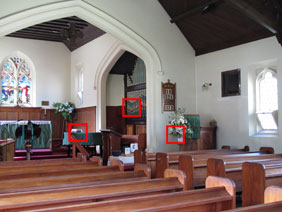 |
|---|
In this second example we moved into the Church location used for our High ISO Noise comparison. Under these conditions, the Handheld Night Scene automatically selected 800 ISO, which made a direct comparison in Program mode easy to achieve.
In the crops below you can see a similar effect to that described above. The version taken in Program mode is visibly much noisier, which gives the Handheld Night Scene version an impression of softness. But look closely and you’ll see the latter actually enjoys slightly finer detail, but again with much lower noise levels.
This is a great result for the IXUS 1000 HS / SD4500 IS, but before you go, scroll down for one more example taken at the camera’s highest sensitivity of 3200 ISO.
Canon IXUS 1000 HS / SD4500 IS: Handheld Night Scene at 800 ISO | ||||
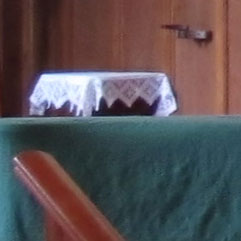 |  |  | ||
f4, 1/25, 800 ISO | f4, 1/25, 800 ISO | f4, 1/25, 800 ISO | ||
Canon IXUS 1000 HS / SD4500 IS: Program at 800 ISO | ||||
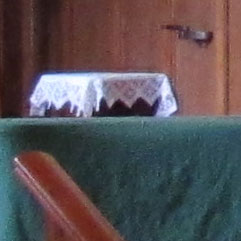 |  |  | ||
f4, 1/25, 800 ISO | f4, 1/25, 800 ISO | f4, 1/25, 800 ISO | ||
Canon IXUS 1000 HS / SD4500 IS: Handheld Night Scene versus Program mode (at 3200 ISO)
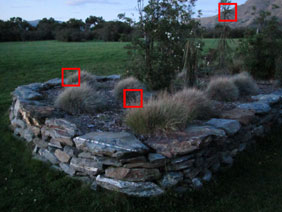 |
|---|
In our final example, we took the IXUS 1000 HS / SD4500 IS out during late Twilight in very low light levels. Unsurprisingly Handheld Night Scene selected the maximum sensitivity of 3200 ISO, which again was easy to match in Program mode for direct comparison.
Starting with the shot in Program mode, the image is very noisy as you’d expect, with significant softness and lack of ultimate detail. Flat areas of colour are very patchy, while fine detail in the grasses are lost.
Moving onto the Handheld Night Scene version and you’ll see much of the visible noise has again been lifted. The middle crop of the grasses is particularly impressive with surprisingly fine detail captured. It may not be as clean as the samples above, but remember this isn’t at 800 or 1250 ISO, but 3200 ISO where most compacts look dire.
Overall, this is an impressive result for the Handheld Night Scene on the IXUS 1000 HS / SD4500 IS and we look forward to seeing it deployed on new models in the range. As to how it works, Canon doesn’t reveal any technicalities, but we counted four frames taken in each burst compared to six on Sony’s Handheld Twilight mode.
Now for more real-life images, check out our Canon IXUS 1000 HS / SD4500 IS Sample Images Gallery, or head straight over to our verdict!
Canon IXUS 1000 HS / SD4500 IS: Handheld Night Scene at 3200 ISO | ||||
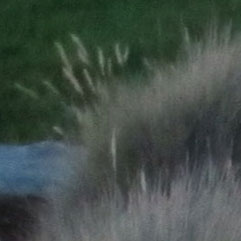 | 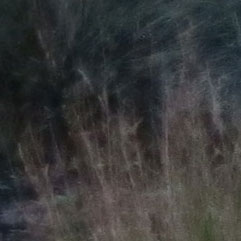 |  | ||
f3.4, 1/8, 3200 ISO | f3.4, 1/8, 3200 ISO | f3.4, 1/8, 3200 ISO | ||
Canon IXUS 1000 HS / SD4500 IS: Program at 3200 ISO | ||||
 | 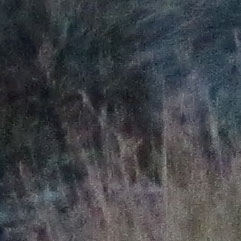 |  | ||
f3.4, 1/5, 3200 ISO (-2/3EV) | f3.4, 1/5, 3200 ISO (-2/3EV) | f3.4, 1/5, 3200 ISO (-2/3EV) | ||

